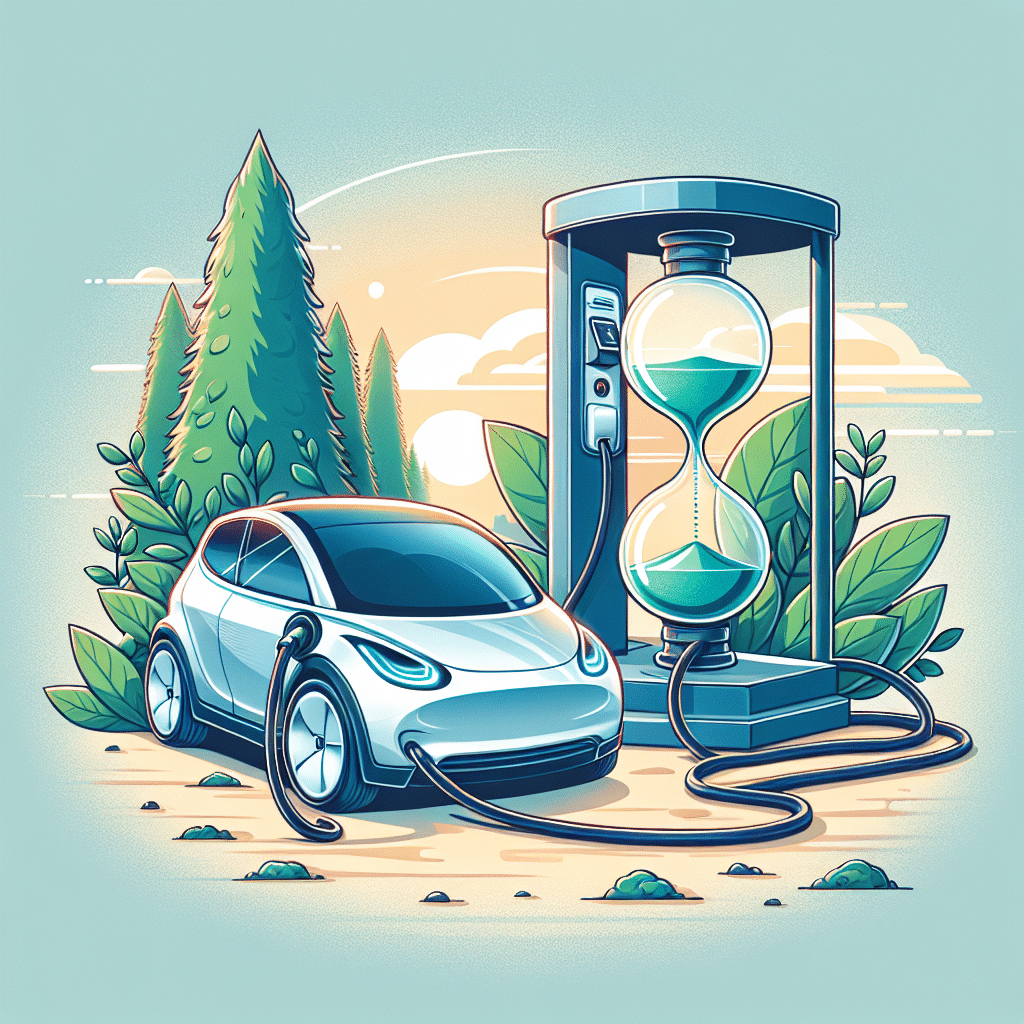Charging Time Overview
Charging an electric vehicle (EV) can vary significantly based on several factors, including the vehicle’s battery size, the charging station’s power output, and the type of charger used. Understanding these variables is essential for EV owners to maximize their driving experiences and minimize downtime.
Types of Electric Vehicle Chargers
-
Level 1 Chargers
- Voltage: 120 volts
- Power Output: Approximately 1.4 kW
- Charging Time: 8 to 20 hours
- Usage: Standard household outlets.
- Best For: Overnight charging at home. Suitable for drivers with low daily mileage as it provides a slow charge.
-
Level 2 Chargers
- Voltage: 240 volts (home) or 208 volts (commercial)
- Power Output: Ranges from 3.3 kW to 19.2 kW
- Charging Time: 4 to 8 hours
- Usage: Home charging stations and public charging networks.
- Best For: Daily charging needs and public charging, especially in workplaces and shopping centers.
-
DC Fast Chargers (Level 3)
- Voltage: 480 volts
- Power Output: 50 kW to 350 kW
- Charging Time: 20 to 45 minutes for 80% charge
- Usage: Found along highways and urban centers.
- Best For: Long trips where rapid charging is necessary to minimize waiting time.
Factors That Affect Charging Time
-
Battery Capacity
- Measured in kilowatt-hours (kWh), the battery’s size influences how quickly it can be charged. Larger batteries take longer to charge fully. For example, a vehicle with a 100 kWh battery will require more time to charge than one with a 40 kWh battery, assuming the same charger is used.
-
Charger Power Output
- The availability of higher-output chargers, such as DC fast chargers, dramatically reduces charging time. Differences in power delivery can affect the speed at which the battery receives energy.
-
State of Charge (SoC)
- Charging time is affected by how depleted the battery is at the onset. Most EVs charge fastest when the battery is at a lower state of charge. Once it approaches 80% capacity, the charging rate starts to taper off, meaning the final 20% of charging can take substantially longer.
-
Vehicle Charging Rate
- Each EV has a maximum charging rate that it can handle. Even if a powerful charger is available, the vehicle’s onboard charger can limit how quickly the battery can charge.
Charging Time Examples for Popular EVs
-
Tesla Model 3
- Battery Size: 60 to 82 kWh
- Level 1 Charging: 15-30 hours for a full charge
- Level 2 Charging: 8-12 hours
- DC Fast Charging: Approximately 30 minutes for an 80% charge
-
Nissan Leaf
- Battery Size: 40 to 62 kWh
- Level 1 Charging: 20-30 hours
- Level 2 Charging: 8-10 hours
- DC Fast Charging: 30-60 minutes for an 80% charge
-
Chevrolet Bolt EV
- Battery Size: 66 kWh
- Level 1 Charging: 20-30 hours
- Level 2 Charging: 7-10 hours
- DC Fast Charging: Approximately 30 minutes for an 80% charge
Environmental and Thermal Factors
-
Temperature
- Charging efficiency can drop in extreme temperatures. Cold weather can slow down charging speeds, while excessive heat can put additional stress on the battery and reduce longevity. Manufacturers often recommend maintaining batteries in specific temperature ranges for optimal charging.
-
Battery Management Systems
- Modern EVs are equipped with sophisticated battery management systems that optimize charging and thermal regulation. These systems manage battery temperature and charging speed, ensuring safety and longevity. The time required to charge may vary accordingly based on the vehicle’s internal processes.
Public Charging Infrastructure
As EV adoption rises, the availability and speed of public charging stations are expanding. Networks such as Electrify America, ChargePoint, and EVgo are enhancing the infrastructure, providing drivers with greater access to fast charging, which aids in reducing overall travel time. Moreover, rewards programs and applications track charging station availability, showing real-time data on charging status and expected wait times, which can aid in planning trips effectively.
Technological Advances and Future Trends
Advancements in battery technology and charging systems are underway, promising to shorten charging times and enhance efficiency. Innovations such as ultra-fast charging (up to 1 MW) and solid-state batteries could introduce dramatically reduced charging duration while improving range and longevity. Corporations are also investing in wireless charging methods and battery swapping technologies, which may revolutionize EV refueling by allowing for faster and more convenient options.
Conclusion on Charging Duration
While the various charging options available to EV drivers can lead to different times required for a full charge, understanding the charging types, influencing factors, and accessing an ever-expanding charging infrastructure allows drivers to manage their electric vehicle experience effectively. By choosing the right method that aligns with their daily habits and using the corresponding technology, electric vehicle owners can optimize their daily use and enjoy the benefits of sustainable transportation.
